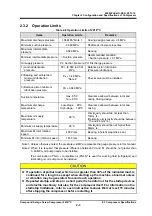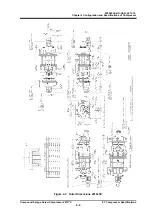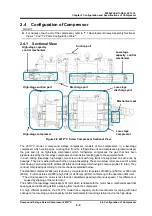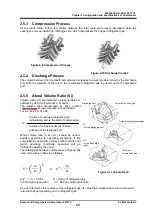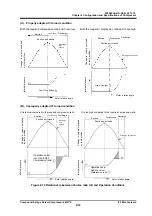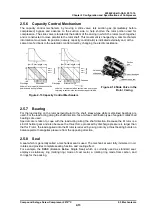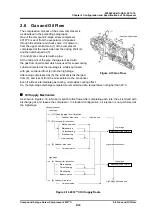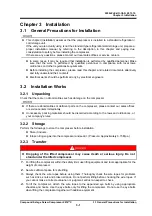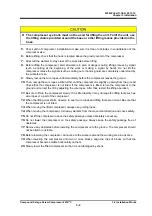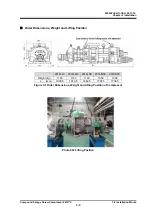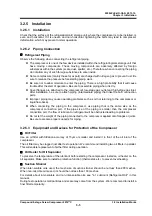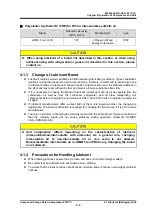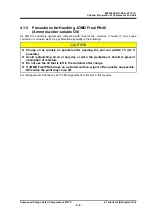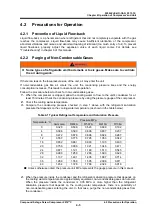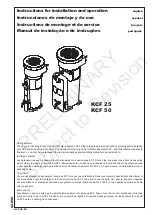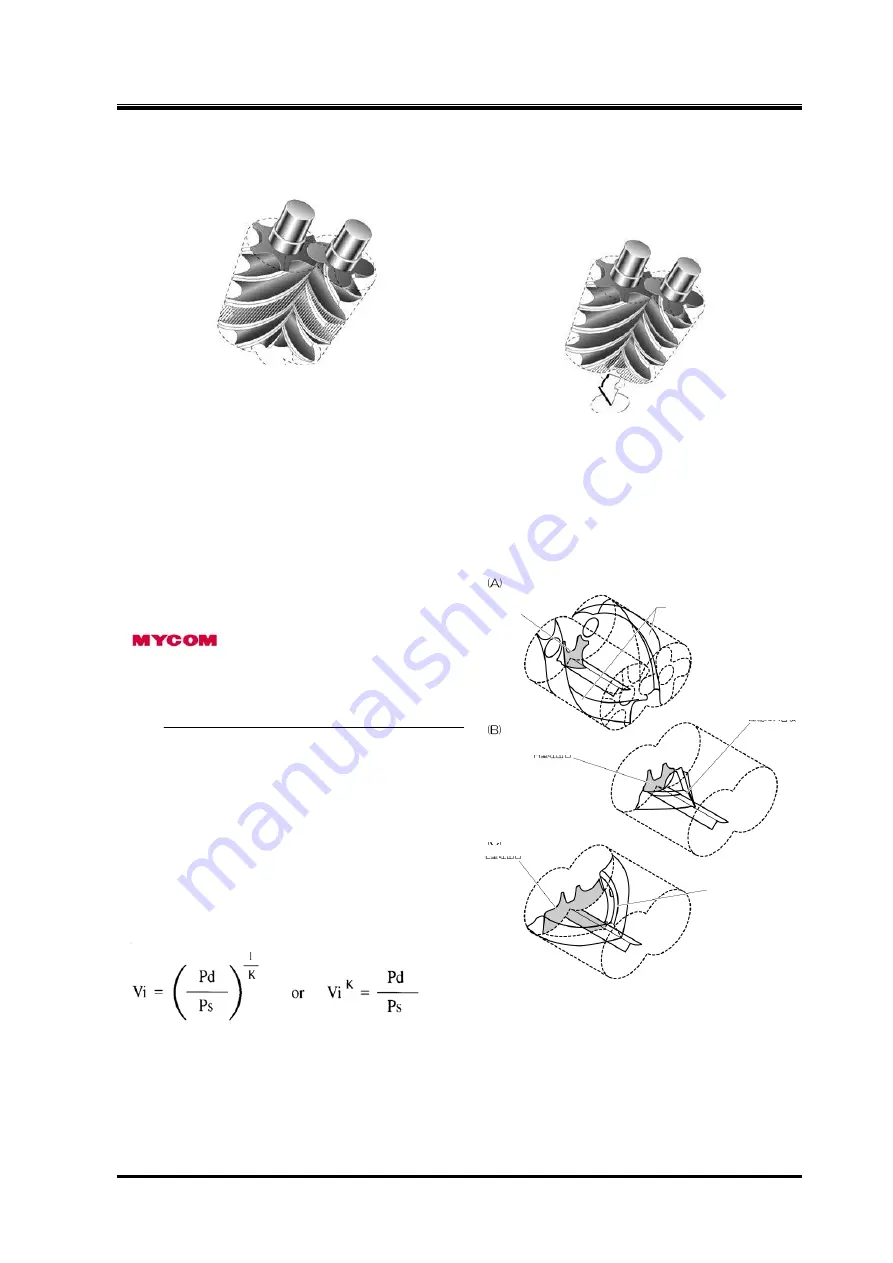
2200LZJE-HO-C6-N_2013.12.
Chapter 2 Configuration and Specifications of Compressor
Compound 2-stage Screw Compressor 2016**C
2.5
Mechanisms
2-11
2.5.3 Compression
Process
As the rotors rotate further, the volume between the rotor teeth and grooves decreases while the
sealing line moves toward the discharge side, which compresses the trapped refrigerant gas.
2.5.4 Discharge
Process
The volume between the rotor teeth and grooves decreases to a level predetermined by the discharge
port. With the rotations of the rotors, the compressed refrigerant gas is pushed out to the discharge
port.
2.5.5 About Volume Ratio (Vi)
Volume ratios (Vi) are indicated in property tables or
catalogs by using port symbols L, M and H.
The volume ratio represented by each symbol
(
screw compressor) is as follows:
L=2.63, M=3.65, H=5.80.
Volume of suctioned refrigerant gas
immediately before the start of compression
Vi =
Volume of refrigerant gas just before
pushed out to discharge port
Which volume ratio (L, M or H ) should be used is
decided according to operating conditions. If the
compressor is used with a volume ratio that does not
match operating conditions, operation will go
inefficiently wasting the power.
The relationship between volume ratios and generally
used compression ratios is as follows:
Figure 2-11 Volume Ratio
(Vi)
K
=
π
i
= Pd/Ps K = Cp/Cv of refrigerant gas
Vi = Design volume ratio
π
i = Design compression ratio
As Vi is affected by the constant of the refrigerant gas, its value that corresponds to the compression
ratio will change depending on the refrigerant gas.
Figure 2-9 Compression Process
Figure 2-10 Discharge Process
Discharge port
Volume of suction gas
H-type discharge port
Volume of compressed gas
Volume of
compressed gas
L-type discharge
port
(C)







